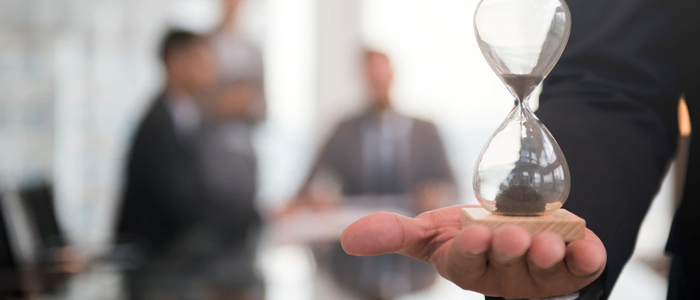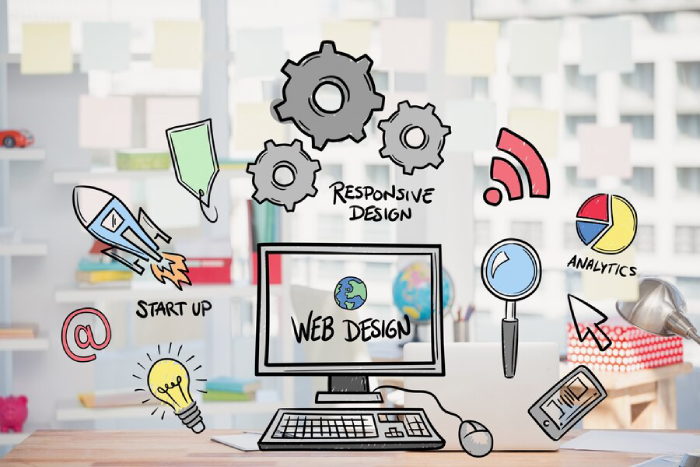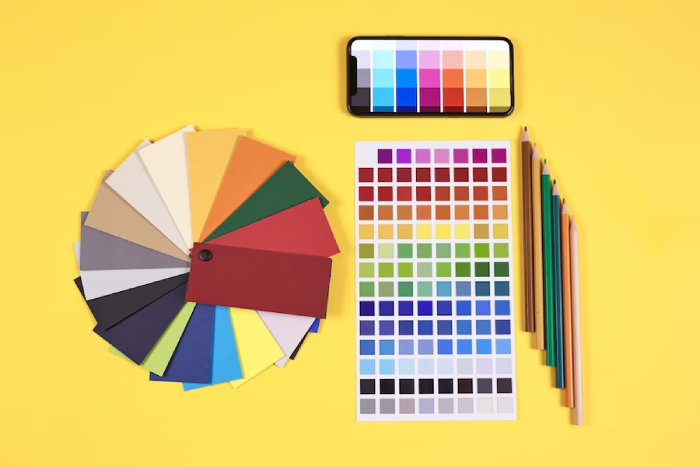Has your old logo become outdated? Are you thinking about redesigning your logo but need to figure out how long the process should take? The answer to how long a logo design process should take depends on a few factors. The size of your company, industry, and budget all play a role in how long it takes to create a new logo. Generally, the entire logo design process can take anywhere from four weeks to several months.
However, the best way to understand the time frame for your specific logo design process is to go through the entire approach. So, as an experienced logo design company, we will take you through each stage of creative company logo design, from research to revisions and finally to the copyright transfer, so you can get a better sense of how long your new logo might take.
Stage One: Research
The first stage of any creative company logo design is research. The first phase of research begins with a meeting. This is when you sit down with your designer and start to think about what your company represents and what kind of message you want to send with your new logo.
The second phase of research for the logo design process is all about your competition. This is when your designer looks at what other companies in your industry are doing with their logos. They’ll also look at any relevant trends to see if there’s any direction you might want to go in that would help you stand out.
You’ll need to consider your company’s history, your target audience, and what kind of feeling you want your logo to evoke. This information will help your designer create a concept that accurately reflects your brand. This stage usually takes one to two weeks, though it could take longer if you’re having trouble zeroing in on the right direction for your new logo.
Also, if you want to learn about the importance of logo design, read our blog post: What Role Does a Logo Design Play in Branding?
Stage Two: Conceptualization
Once the research is complete, it’s time to develop some creative company logo concepts. This is usually the fun part, as you’ll get to see your designer’s initial ideas for what your new logo might look like. Your designer will come up with a few different concepts, often based on different directions you could take your logo design process. For example, they might create an idea that plays off your company name or uses a symbol to represent what you do.
Once they have a few concepts ready, they’ll present them to you for feedback. You’ll then have the opportunity to provide feedback and request changes. Your designer will take this feedback and create revised concepts. This stage usually takes one to two weeks, but it could take longer if you’re having trouble deciding on a direction for your new logo. Or, if the conceptualization entirely fails to impress you, then there is an alternative stage. This is not exactly staged 3, but it is an alternative to conceptualization. And it’s called Inspiration.
Stage Three: Inspiration
If the conceptualization stage fails to give you the desired results, then it is time for inspiration. This could involve simply looking through a design portfolio for some outside inspiration. It might also include taking a walk and observing your surroundings for potential logo ideas.
Once you have an idea of what you want your logo to look like, you can provide this feedback to your designer, and they’ll start working on revised concepts. This stage usually takes one to two weeks, but it could take longer if you’re having trouble finding the right inspiration for your new logo.
Stage Four: Revisions
After you’ve either provided feedback on the initial concepts or given your designer some direction about inspiration, it’s time for them to create revised concepts. This is when your designer will take your feedback and make a second round of ideas for you to review. Once again, you’ll have the opportunity to provide feedback and request changes. Your designer will make the necessary changes and create a final set of concepts for you.
Stage Five: Rebranding
After you’ve selected a concept, it’s time to start thinking about rebranding. This updates your website, business cards, stationery, and other marketing materials to reflect your new logo. You’ll also want to update your social media accounts wherever your old logo appears. Depending on the extent of your rebranding efforts, this stage could take weeks or even months to complete.
During this same stage, there may come times when you realize that the logo design you created with your designer doesn’t quite fit with your brand. If this happens, you can always go back to your designer and ask for revisions.
Stage Six: Mockups
Once your rebranding is complete, it’s time to start thinking about how your new logo will be used. Will it be printed on business cards? Embroidered on uniforms? Screen-printed on t-shirts? Your designer can create mockups of your logo in various applications so you can see how it will look before you commit to using it.
Stage Seven: Finalization
After seeing how your new logo looks in various applications, it’s time to finalize the design. This involves making final tweaks to the logo’s color, size, or shape. Once you’re happy with the arrangement, your designer will create a digital file of your logo that you can use for print or web.
Now, let’s look at some tips from our logo designing experts on saving your precious time and money while designing a logo. At the finalization stage, reading thoroughly about what makes your logo better than the others is essential. Here’s a blog post that might help Tips To Make Your Logo Stand Out
1. Define your goals and objectives
Before starting the design process, it is important that you first define your goals and objectives. What are you looking to achieve with your new logo? How will it be used? Answering these questions will help you narrow down your design options and save you time in the long run.
2. Do your research
Once you know your logo’s goal, it’s time to research. Look at other logos in your industry and take note of what you like and don’t like about them. This research will come in handy when you start working with a designer.
3. Make a list of must-haves
After you’ve done your research, it’s time to start thinking about what you want in a logo. Do you want something simple or complex? Bold or subdued? Modern or traditional? Creating a list of must-haves will help you communicate your vision to your designer and save you both time and money.
4. Find a designer who specializes in logo design
When finding a designer, you must find someone specializing in logo design. This may seem like an obvious tip, but many businesses need to work with a generalist designer when they should be working with a specialist. Logo design is its art form, so you’ll want to ensure you’re working with someone with experience creating logos.
Now, this is where you will be faced with three different options:
1. Freelancers
2. Boutique Agencies
3. Full-Service Agencies (LogoVent)
We will discuss in detail in the later section which option will be best for you.
5. Be prepared to give feedback
During the design process, you will be asked to provide feedback on the various concepts your designer comes up with. You must take the time to provide thoughtful and constructive feedback so your designer can create a logo you’re happy with.
6. Be open to revisions
Even if you love your designer’s first concept, you must allow for revisions. The revision process is an important part of logo design, and it’s how designers fine-tune their concepts to create a perfect logo for their clients.
7. Trust your gut
Once you’ve gone through the revision process and you’re presented with a few final designs, it’s time to trust your gut. If you have a strong feeling about one of the designs, go with that one. Chances are, it’s the right choice.
8. Have realistic expectations
It’s important to have realistic expectations when designing a logo. A logo is not going to transform your business overnight magically. It’s simply one piece of your overall branding strategy.
9. Be patient
Designing a logo takes time, so you must be patient. Rushing your designer will only result in a subpar logo you’re not happy with.
10. Don’t skimp on quality
When it comes to logo design, you get what you pay for. If you try to cut corners by working with a cheap designer or using a DIY logo maker, chances are you will not be happy with the result. Your logo is an important part of your brand, so it’s worth investing in a high-quality design.
Now that we’ve gone over some tips on saving time and money while designing a logo let’s look at the three options you have when finding a designer.
Freelancers
Working with a freelancer is often the cheapest option when it comes to logo design. However, there are some drawbacks that you should be aware of before you choose to work with a freelancer.
The first thing to remember is that logo design is not a one-time project. A good logo will evolve as your business grows and changes. You’ll need to maintain a relationship with your designer long after completing the initial project.
If you’re working with a freelancer, there’s no guarantee they’ll be available when you need them. They may be unavailable for weeks or even months at a time. This can be frustrating and cause delays in your branding strategy.
Another thing to keep in mind is that freelancers often don’t have the same level of experience as designers who work at an agency or studio. This means they may not be able to handle complex projects or understand the strategic thinking that goes into logo design.
Finally, working with a freelancer can be a riskier proposition than working with an established company. This is because you have no guarantee of quality or professionalism when you work with a freelancer.
However, before you hire a freelancer, read our blog post: How Much Should a Freelancer Charge for a Logo Design to be sure about the price ranges.
Boutique Agencies
Boutique agencies are small design studios specializing in a specific design type, such as logo design. These agencies usually have a team of designers who work together on projects.
The main advantage of working with a boutique agency is that you’ll be able to tap into the collective experience of the entire team. Your project will benefit from the combined knowledge and expertise of the agency’s designers.
Another advantage of working with a boutique agency is having a single point of contact throughout the project. This can make communication and coordination much easier than working with a freelancer.
The main downside of working with a boutique agency is that they tend to be more expensive than freelancers. This is because you’re paying for the collective experience of the entire team, not just one designer.
Full-Service Agencies
Full-service agencies offer a wide range of services, from branding to marketing to web design. These agencies usually have large teams of designers who work on projects for multiple clients.
The main advantage of working with a full-service agency is that you’ll have access to a wide range of services. This means you can tap into the agency’s collective experience and expertise for your branding strategy.
Another advantage of working with a full-service agency is that they usually have a large team of designers. This means your project will be completed promptly, without the delays that can occur when working with a freelancer.
The main downside of working with a full-service agency is that they tend to be more expensive than other options. This is because you’re paying for the collective experience of the entire team, not just one designer. But LogoVent goes a step beyond that. We can do all of this and more at a price you’re comfortable with.
Final Thoughts
There’s no one-size-fits-all answer to how long a logo design should take. The best option for you will depend on your budget, timeline, and project complexity.
If you’re working with a limited budget, you may want to consider working with a freelancer. This option is usually the cheapest, but it comes with some risks.
If you’re looking for a high-quality logo design, you may want to consider working with a boutique agency. These agencies usually have a team of experienced designers who can handle complex projects. If you need a wide range of services, from branding to web design, you may want to consider working with a full-service agency. These agencies have the experience and expertise to help you with your branding strategy.
LogoVent can help you create a creative company logo that’s perfect for your business. We have a team of experienced designers who can handle projects of any size or complexity. And we offer a 100% satisfaction guarantee, so you can be sure you’ll love your new logo.


